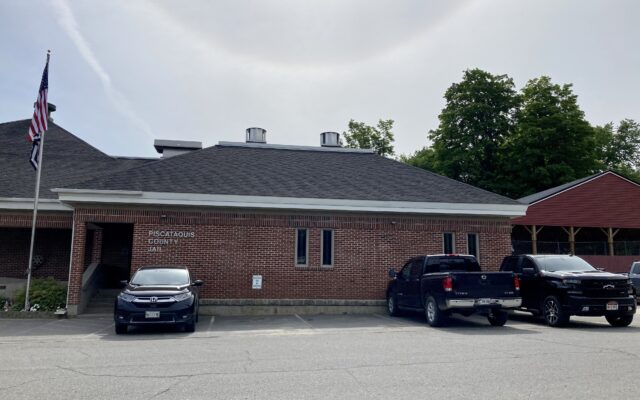
Piscataquis County emergency radio system project could have $6.9M cost
DOVER-FOXCROFT — Since 2020 Piscataquis County and municipal emergency officials have been working to update outdated infrastructure and long-running problems with the county’s radio communications for emergency personnel. After delays due to questions on funding sources, the endeavor is now being overseen by a 6-member committee.
There also is a 15-member subcommittee including town managers, fire chiefs, police department members, emergency medical service providers, and representatives of CPKC Railroad.
The Piscataquis County Commissioners heard an update from consultant Normand Boucher of Communications Design Consulting Group of Barrington, New Hampshire during a meeting on Tuesday, Nov. 19. Boucher said there are additional costs for the project.
“We’re thinking $2.7 million and I’m hoping that’s the maximum amount,” Boucher said about the estimated $2,695,000 costs for seven new tower sites which would be above the $4.2 million already awarded for radio infrastructure. Together this would bring the project to about $6.9 million total.
He mentioned working with the county for four years and having the project on hold for a few years while awaiting some grant funding. Last year $4.2 million for the radio project was part of a U.S. Senate Appropriations bill championed by U.S. Sens. Angus King and Susan Collins of Maine. The award was the largest of seven projects included in the part of the legislation that would give $7.6 million to police and other public safety agencies in Maine.
“Since then we have come back on the project and started to finalize the system design and procurement,” Boucher said. He said the project request for proposals is essentially finished, and would be approved by the commissioners before being released by the end of the year.
With a slideshow, Boucher said the emergency radio system project is broken down into both wireless equipment and tower facility initiatives. He said much of the existing infrastructure is 1950s-era technology and design and is nearing the end of life with poor coverage in some parts of the region.
“It’s not really a network, it’s just a bunch of transmitter sites that are scattered throughout the county,” Boucher said. “We would bring that up to acceptable public safety standards, which are essentially handheld portable. Also in order to do that we would need to have a network in place so instead of having individual sites you would have sites that are all interconnected with microwave radio coming back to the dispatch center.”
Improvements being proposed are a cohesive wide area radio design with transmitter simulcast, receiver voting, and microwave radio site links for improved coverage and reliability.
Boucher said 11 transmitter sites are currently in use. After improvements have been made there would still be 11 but seven sites would be new for improved coverage.
“Every site needs work,” he said, saying the remaining sites will need some repairs and towers replaced. Boucher said light-duty towers cannot sustain new antenna loads and some lack sufficient height for line-of-sight microwave connections. He also said some of the locations will require new shelters for radio equipment and some sites will need new generators
Boucher said there could be site-specific conditions that may be discovered later and would alter the project costs. These include a need for specialized foundation design due to the soil, materials prices varying due to market conditions, road installation, and erosion prevention measures.
He suggested a bond initiative for the $2.7 million, and said the RFP procurement phase will identify the exact cost breakdown.
Brownville Fire Chief Shawn Mitchell of the radio committee said previous proposals had $2,000 to $4,000 in monthly tower rental rates.
“We were looking at costs in excess of $120,000, $130,000 a year in today’s money just for tower rental costs year after year after year,” he said. “As taxpayers in the county we didn’t think that was spending the county’s money or the towns’ money wisely whereas this alternative brings the property of the towers mostly to the county’s control with the possibility of being able to potentially rent space to others whether they’re contractors, whether they’re cellular users.”
Mitchell said the annual bond costs would be less than the rental fees and then the county would own the towers.
“So that’s where we are at, we have to decide on a $2.7 million bond for taxpayers,” Commissioners Chair Andy Torbett said, saying the alternative would be to rent or lease the towers. “We don’t have to come to a decision today, but that’s where we are at.
The county paid Communications Design Consulting Group $27,000 for a feasibility study on radio communications, which was first presented in November 2021. Before the feasibility study, Boucher spent months meeting with members of area fire and police departments and toured sites around the region, including locations of about a dozen transmitters throughout Piscataquis County. Many of the problems stem from the hilly and mountainous terrain of the region and/or aging and out of date infrastructure.